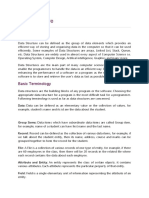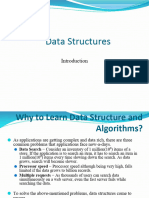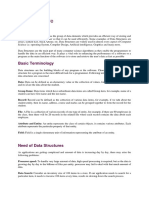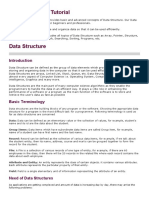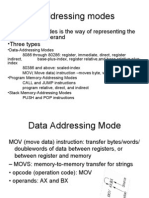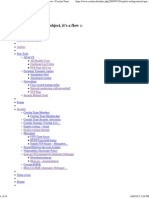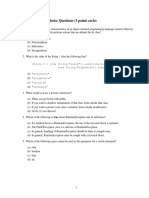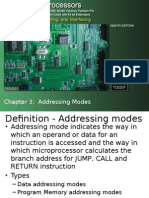0% found this document useful (0 votes)
10 views20 pagesDS Week1 Introduction
The document provides an overview of data structures, including their definitions, classifications, and characteristics. It covers linear and non-linear data structures, detailing examples such as arrays, linked lists, stacks, queues, trees, and graphs, along with their operations and applications. Additionally, it discusses the importance of selecting appropriate data structures for optimizing performance and memory utilization in computational systems.
Uploaded by
Muuhab MahmoudCopyright
© © All Rights Reserved
We take content rights seriously. If you suspect this is your content, claim it here.
Available Formats
Download as PDF, TXT or read online on Scribd
0% found this document useful (0 votes)
10 views20 pagesDS Week1 Introduction
The document provides an overview of data structures, including their definitions, classifications, and characteristics. It covers linear and non-linear data structures, detailing examples such as arrays, linked lists, stacks, queues, trees, and graphs, along with their operations and applications. Additionally, it discusses the importance of selecting appropriate data structures for optimizing performance and memory utilization in computational systems.
Uploaded by
Muuhab MahmoudCopyright
© © All Rights Reserved
We take content rights seriously. If you suspect this is your content, claim it here.
Available Formats
Download as PDF, TXT or read online on Scribd
/ 20





